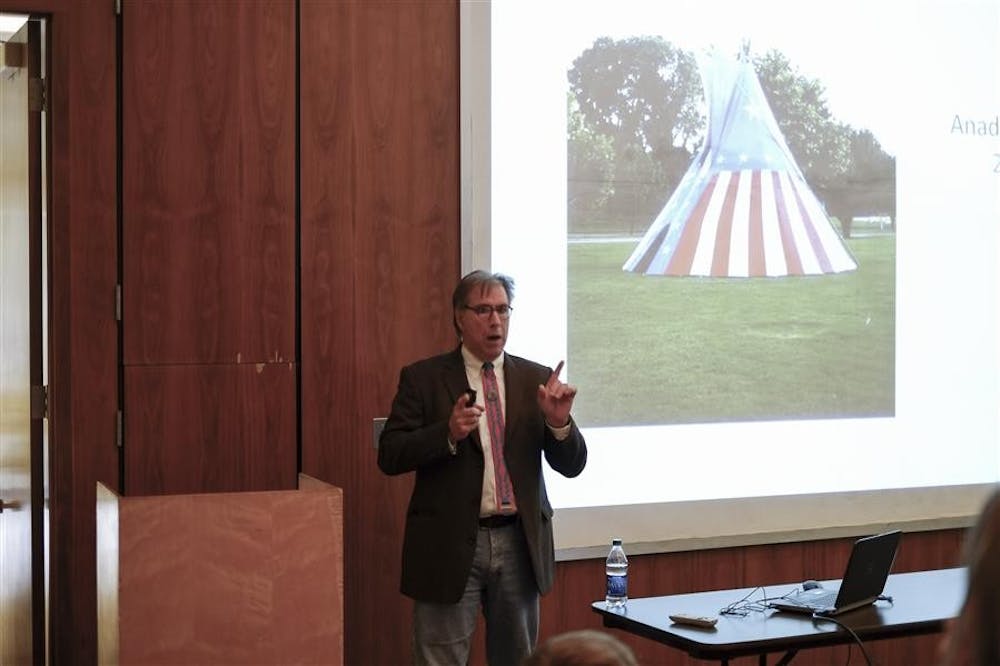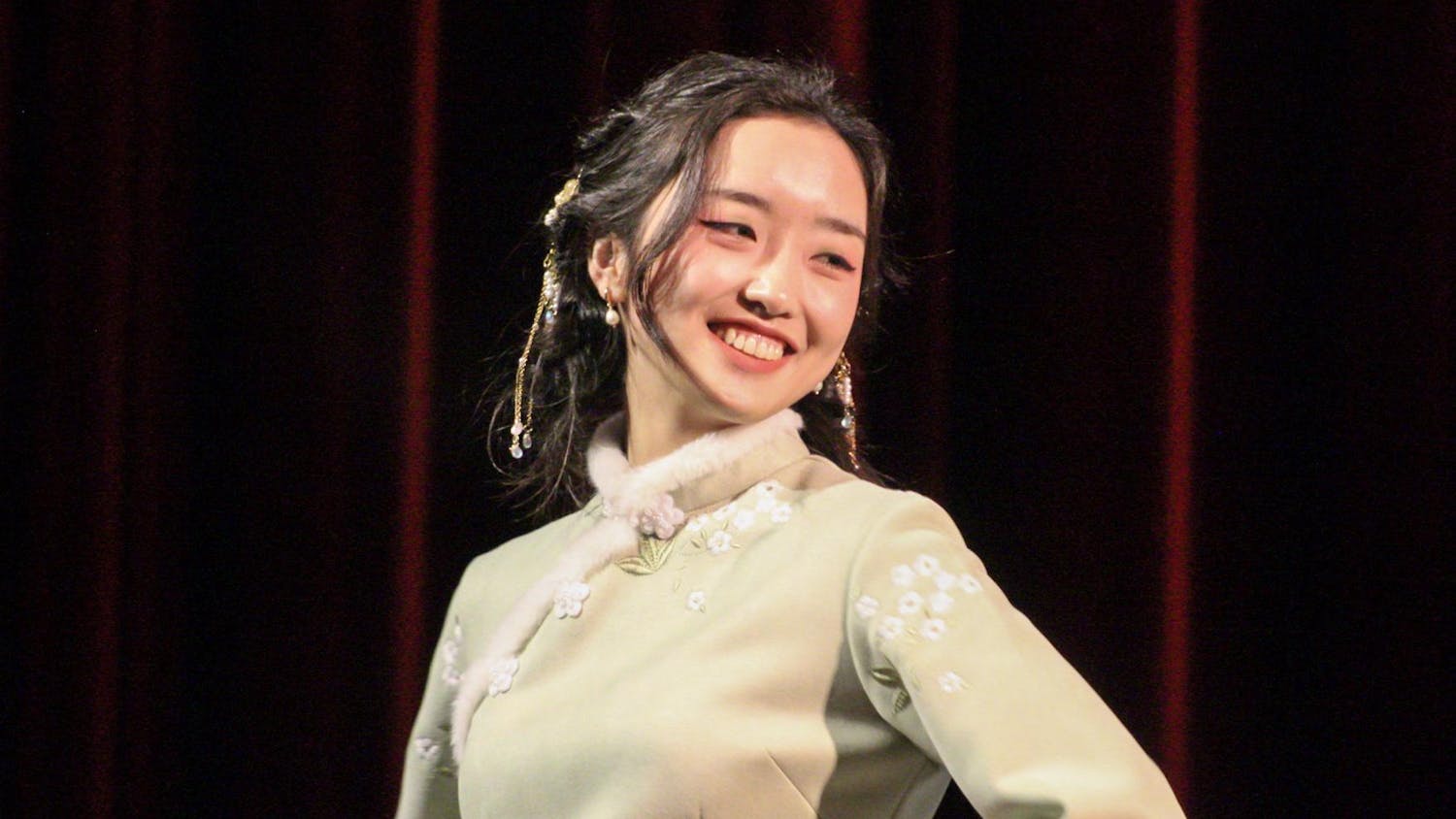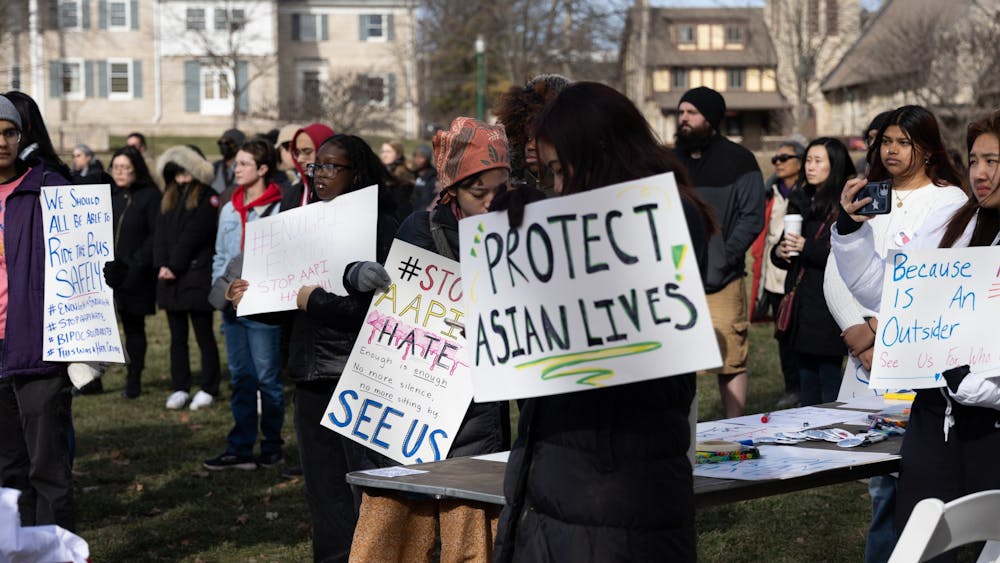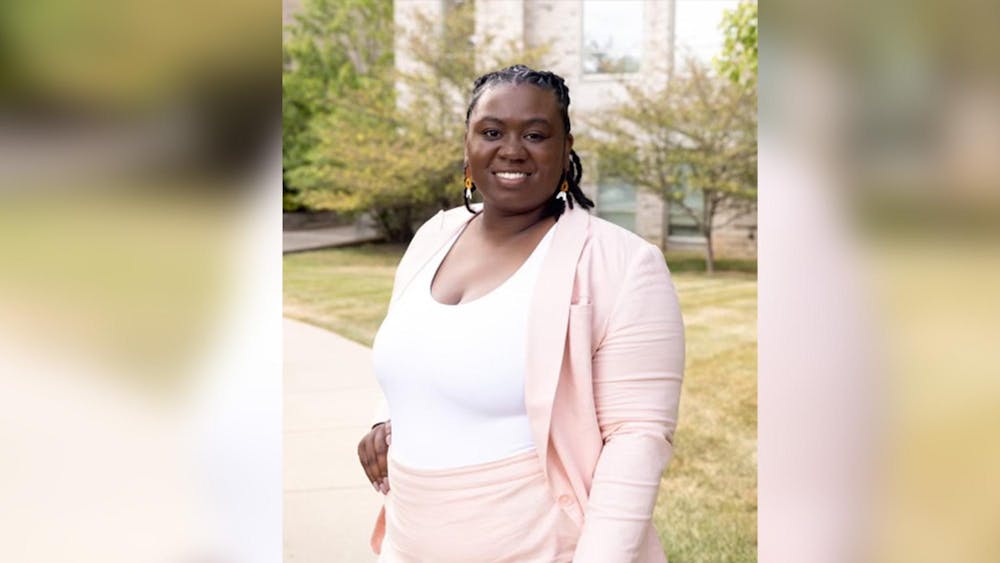There’s nothing that brings a community together more than the beating of a drum and a dance, said Clyde Ellis, professor of history at Elon University, North Carolina.
Ellis gave a lecture, titled “This is a Good Way, Get Up and Dance: A History of Modern Powwow Culture” Thursday at the Mathers Museum of World Cultures. He discussed contemporary powwows and their ceremonial meaning.
“These dances have long been a vital element in the social and ceremonial lives of the native people,” Ellis said. “It turned out that they had some sort of staying power that policy-makers could have never imagined.”
Students packed the room to full capacity to hear the lecture, which was co-sponsored by First Nations Educational and Cultural Center and IU’s Department of History.
Ellis spoke about the continued strength of Native American people in the continuation of their customs and heritage throughout time, despite the difficulties they faced.
Ellis said the tradition of powwow is moral, spiritual and psychologically profound, but it is also a good time.
“They are so powerful as a form of gathering,” Ellis said.
“This is an opportunity for people to gather and affirm relationships and the values that they share. People find it as a way to relate to each other in a form of community, it’s very powerful.”
Ellis talked about the struggle Native Americans faced, all the while continuing to dance and celebrate life. Powwow is celebrated today during holidays and birthdays, and is used as a way to honor veterans of war.
“Powwow people often talk about how this is more than dances,” Ellis said. “It’s our way of life. It is hardly the only way — there are lots of ways to be Indian.
“The dance is widely received because of its ability to mark and to give power to these kinds of amenities.”
Ellis also described the traditional outfits worn to a powwow and the difference between female and male native garb.
Females wear beaded dresses referred to as “jingle dresses” and fancy shawls, while men wear traditional buckskin pants.
“This is a good way,” Ellis said, “get up and dance.”
The lecture was followed by a reception that offered an assortment of cookies and hot apple cider for refreshment.
Ellis was inspired to speak at IU because of IU’s Third Annual Traditional Powwow taking place Saturday and Sunday at the Willkie Auditorium.
It will serve as the local primary event for Native American Heritage Month.
The powwow will begin at 11 a.m. each day and will feature performances by drum groups and singers, according to a press release.
Each day at 1 p.m. and 7 p.m. Saturday, tribes from across the United States and Canada will perform ceremonial “grand entries.”
“Gourd dancing” will take place each day at 11 a.m. Attendees can enjoy a free meal each day at noon and will be able to purchase traditional crafts.
“What people are almost always drawn to is the music,” Ellis said.
“They hear the drum and they hear the singing. It’s very unique, and very powerful. You know, you can feel the beat of the drum and people find that very compelling.”
Follow reporter Torie Schumacher on Twitter @shoe_torie.
Lecture explains powwow cultural meaning, history

Get stories like this in your inbox
Subscribe





